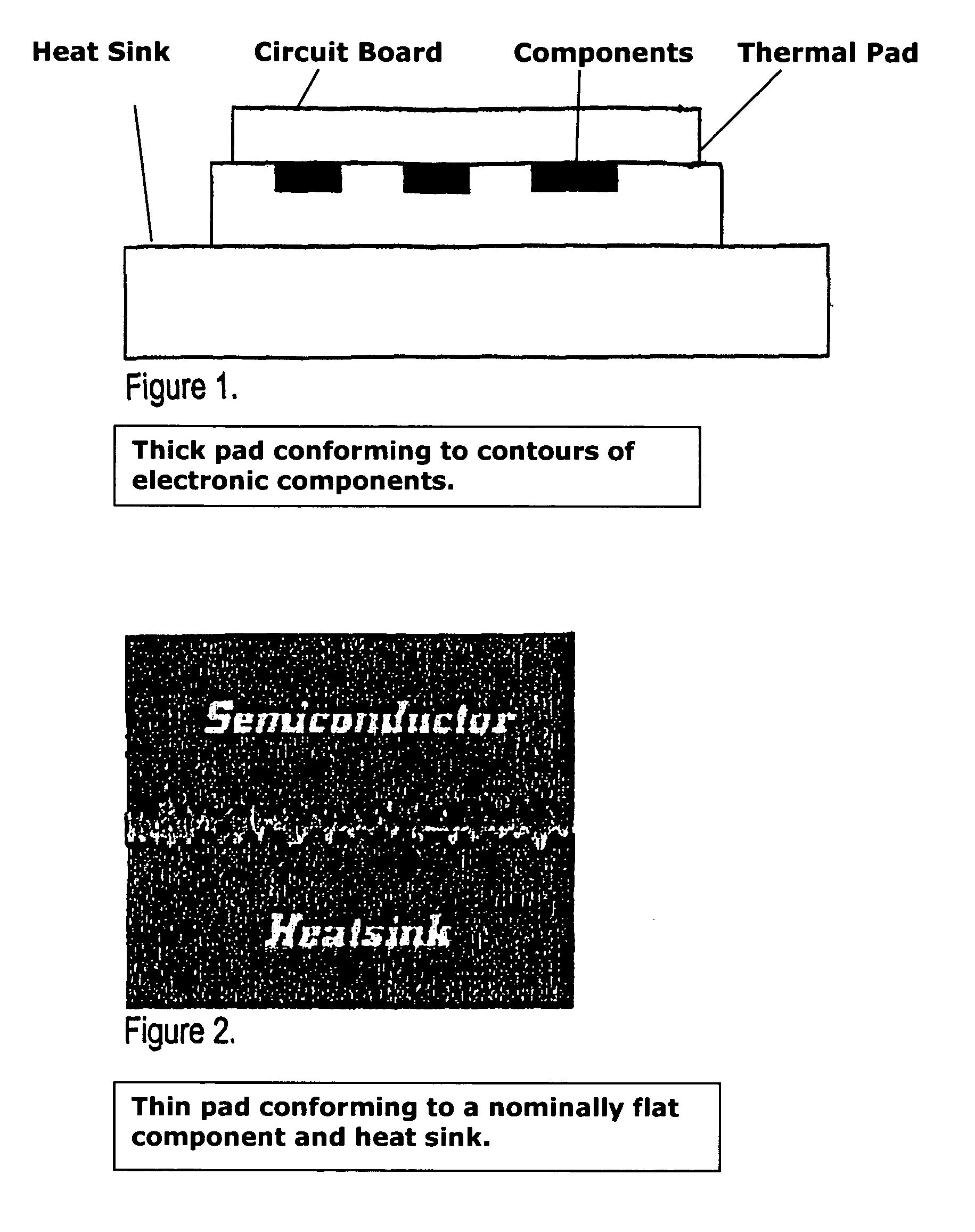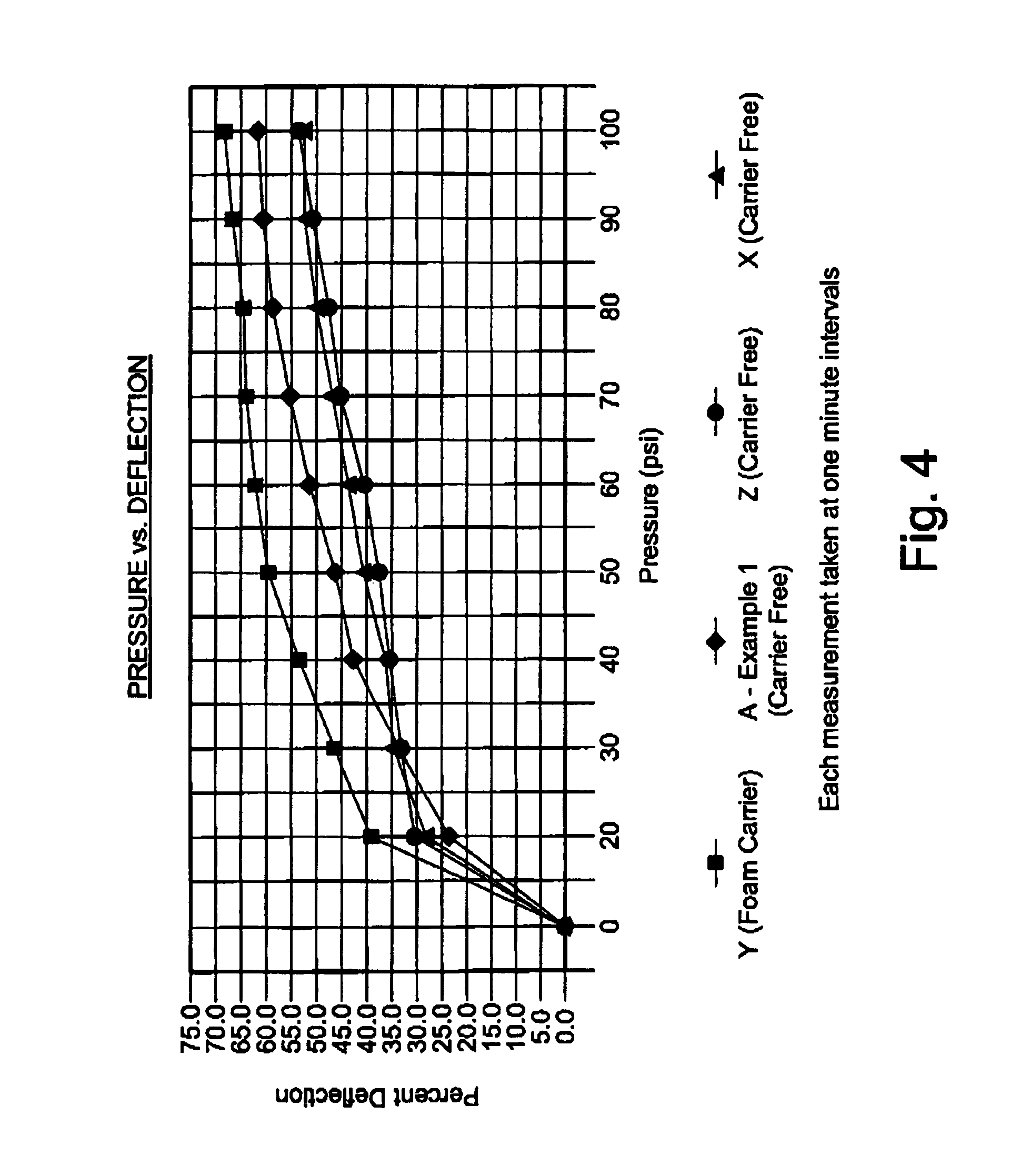Silicone pads for electronics thermal management
a technology of thermal management and silicone pads, applied in the field of thermally conductive pads, can solve the problems of increasing the probability of component malfunction, reducing the conformance of the material about the component face and the circuit board, and reducing the elasticity of the material, so as to limit the desired performance characteristics of the pad
- Summary
- Abstract
- Description
- Claims
- Application Information
AI Technical Summary
Benefits of technology
Problems solved by technology
Method used
Image
Examples
Embodiment Construction
which is a formulation suitable for use as 2.5 millimeter thick thermal pads according to exemplary embodiments.
[0018]FIG. 4 is an exemplary line graph illustrating percent deflection versus pressure for each of the four product samples (also shown in FIG. 3), wherein the defection was measured as the difference in height relative to the original height taken at one minute intervals under increasing pressure.
[0019]FIG. 5 is an exemplary bar graph illustrating compression set testing results relating to the ability of each of the four product samples (also shown in FIGS. 3 and 4) to return to a starting height after compression of one hundred pounds per square inch for thirty minutes, wherein the measurements were taken ten minutes after the pressure was removed.
[0020]FIG. 6 is an exemplary bar graph illustrating thermal impedance testing results for each of the four product samples (also shown in FIGS. 3 through 5), wherein the results were taken at one hundred degrees Celsius using...
PUM
| Property | Measurement | Unit |
|---|---|---|
| thickness | aaaaa | aaaaa |
| thickness | aaaaa | aaaaa |
| thickness | aaaaa | aaaaa |
Abstract
Description
Claims
Application Information
 Login to View More
Login to View More - R&D
- Intellectual Property
- Life Sciences
- Materials
- Tech Scout
- Unparalleled Data Quality
- Higher Quality Content
- 60% Fewer Hallucinations
Browse by: Latest US Patents, China's latest patents, Technical Efficacy Thesaurus, Application Domain, Technology Topic, Popular Technical Reports.
© 2025 PatSnap. All rights reserved.Legal|Privacy policy|Modern Slavery Act Transparency Statement|Sitemap|About US| Contact US: help@patsnap.com



